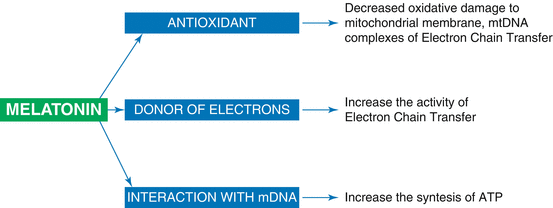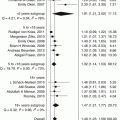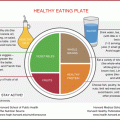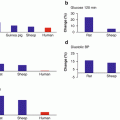Fig. 16.1
Mice subjected to circadian disruption (CD) show statistically significant weight gain starting at 6 weeks. By the 10th week, CD mice weigh significantly more than mice without circadian disruption (t test, P = 0.0037; D), and at the end of the experiment, they show significantly higher plasma leptin and plasma insulin [3]
16.3 Day and Night: Different Signals for Losing Weight
Circadian rhythmicity influences the central regulation of behavior, reproduction, metabolism, and virtually every other physiological parameter. The disruption of the key signal of the circadian pacemaker, environmental light, might explain part of the many of the chronic diseases associated with western lifestyle and social organization. The highly inheritable functional properties of the circadian pacemaker could be at the root of genetic vulnerability to obesity. Epidemiological evidence links human obesity to exposure to electrical light [5] and to circadian desynchronization [6]. Furthermore, genetic evidence supports an association between obesity and variations in the expression of genes induced by time in humans [7]. Taken together, this data supports the concept that human phenotype is driven toward obesity and metabolic dysfunction also through an interaction of circadian desynchronization induced by artificial light and the individual inheritable properties of the circadian pacemaker.
In 2012, Wise and coworkers [8] explained why light is so important in the regulation of circadian rhythm of the human body. He found that latitude lines are significantly related to the properties of circadian pacemaker and can affect individual susceptibility to circadian desynchronization and its metabolic consequences. For example, humans recently migrating north from equatorial zones seem to be more vulnerable to the metabolic effects of circadian desynchronization and susceptibility to obesity when they are exposed to the variable day length of northern latitudes [9]. Furthermore, these migrants are generally considered to be at increased risk of obesity, with individuals of African ancestry particularly susceptible to obesity and metabolic dysfunction as they migrate to the north. An interesting corollary to this argument is the question of whether humans native in northern zones are more compliant to circadian rhythms that make them less vulnerable to the effects of circadian desynchronization. Additional epidemiological evidence is provided by the reduced susceptibility to metabolic syndrome of Yup’ik Eskimos in spite of westernization and a high prevalence of increased central adiposity [10]. Although these native North American people acquire a more modern American lifestyle, their circadian resilience might protect them against some of the effects of obesity. This data in humans are in agreement with findings in lower animals. As early humans migrated north of the Equator, they encountered photoperiods that were less predictable, with the timing of sunrise and sunset showing daily variation. It is likely that human fitness was optimized by the regular photoperiod at the Equator and that migration into the variability of northern places came at the expense of circadian resonance. But this was most likely a worthwhile trade-off for better climatic conditions, food, or extended territories.
Data on the relationship between sleep–wake cycle in pregnancy and weight gain are conflicting, and Restall et al. [11] find that more than 10 h of night sleep on weekdays are positively correlated with higher gestational weight gain than women who reported sleeping less than 8 h. These results are opposite to the findings by Althuizen, who correlated short nocturnal sleep with increased gestational weight gain [12]. Recently a larger study concluded that sleep deprivation is a risk factor for higher gestational weight gain [13].
16.4 Ruler of Circadian Hormones
One of the possible connections between alteration of the phases of light and metabolism is the production of melatonin. In humans, the melatonin is produced by the pineal gland, a small endocrine gland located in the center of the brain but outside the blood–brain barrier. Production of melatonin is inhibited by light hitting the retina and facilitated by darkness. The melatonin signal forms part of the system that regulates the sleep–wake cycle by chemically causing drowsiness and lowering the body temperature, although it is the central nervous system (specifically the suprachiasmatic nuclei) that controls the daily cycle in most components of the paracrine and endocrine systems rather than the melatonin signal alone. The anti-obesogenic and the weight-reducing effects of melatonin depend on several mechanisms and actions [14]. Experimental evidence demonstrates that melatonin is necessary for the proper synthesis, secretion, and action of insulin [15]. Melatonin is a powerful chronobiotic being partly responsible for the daily distribution of metabolic processes: daytime activity/feeding phase is associated with high insulin sensitivity; nighttime rest/fasting is associated with insulin-resistant metabolic phase of the day [16]. Furthermore, melatonin commands energy flow to and from the stores and energy expenditure through the activation of brown adipose tissue. Table 16.1 summarizes some of the major aspects of melatonin functions [18].
Biochemical effects of melatonin |
|---|
Experimental evidence demonstrates that melatonin is necessary for proper synthesis, secretion, and action of insulin. The reduction in melatonin production induces insulin resistance and glucose intolerance |
Melatonin is responsible for the establishment of an adequate energy balance mainly by regulating energy flow to and from fat stores |
Melatonin may improve electron transport chain activity and, consequently, ATP production |
Melatonin is one of the major scavengers of both oxygen- and nitrogen-based reactive species |
The complex actions of melatonin on both the metabolic side and the control of oxidative stress go in the direction of explaining how the respect of a proper circadian rhythm with appropriate sleep duration can help to prevent metabolic disorders |
Finally, there is a large body of evidence that melatonin is one of the major scavengers of both oxygen- and nitrogen-based reactive species. The lipophilic nature of melatonin helps indolamine to cross cell membranes to easily reach subcellular compartments, including the mitochondria: melatonin interacts with lipid bilayers and stabilizes mitochondrial inner membranes, which may improve electron transport chain activity, and, consequently ATP production (Fig. 16.2) [19].
The reduction in melatonin production, as during aging, night-working shifts, or illuminated environments, induces insulin resistance, glucose intolerance, sleep disturbance, and metabolic circadian disorganization characterizing a state of chronodisruption leading to obesity. It is evident that the complex actions of melatonin on both the metabolic side and the control of oxidative stress go in the direction of explaining how the respect of a proper circadian rhythm with an appropriate sleep can help prevent metabolic disorders of pregnant women and, consequently, even an excessive weight gain.
16.5 The Importance of a Correct Timing of the Three Daily Meals
Current evidence suggests that the timing of meals can influence metabolic syndrome by affecting circadian rhythms. In particular, there is huge scientific evidence that breakfast is one of the most important daily moments to give a strong signal of metabolic activation to the whole body, in order to stop obesity and ease weight loss. Odegaard et al. described the strategic importance of breakfast in the fight against at least four “wealth diseases” [20]: obesity, metabolic syndrome, hypertension, and diabetes. This study, like many others under different perspectives, found that those subjects having breakfast only occasionally had the tendency to put on weight, while those having breakfast regularly were significantly protected against the abovementioned disorders, showing a very significant loss of weight compared to the controls: almost 2 kg less in those regularly having breakfast compared to the subjects having it only occasionally or never. To comply with a proper circadian rhythm, breakfast should be the most rich meal of the day.
16.6 Breakfast: The Most Important Signal of Richness to Activate Metabolism
After breakfast, caloric intake should be reduced gradually until having a light dinner early in the evening. Also the composition of breakfast has great importance in the regulation of the mechanisms of satiety during the day. An interesting scientific work proposed by Fallaize et al. [21] compared three different types of breakfasts, with equal energy intake, to evaluate its effect on satiety, hunger, and subsequent calorie intake throughout the day. The first proposed breakfast consisted of eggs with toast, the second cereals, milk, and toast, while the third was a croissant and juice. The ones who had eaten eggs in the morning had significantly reduced their energy intake during lunch and dinner, despite having available unlimited amount of food. The first choice, which showed the highest effect on satiety, was characterized by having a higher protein intake and the lowest percentage in carbohydrates. The choices that are made in the morning affect diet throughout the day by modulating feeding behavior. These evidences are totally forgotten by the lifestyle counseling offered by the vast majority of doctors in southern European countries where breakfast is limited to refined carbohydrates, like biscuits, white bread, or sugar disguised in jam, coffee, or tea or even worse is totally skipped but for a cup of coffee.
16.7 Proteins in Every Meal to Stimulate Metabolism and Build Lean Mass
To lose weight properly, every meal has to be combined with the right amount of protein. Mamerow et al. [22] have in fact precisely defined that the amount of protein required during a day must be distributed in a balanced manner among all three meals. The authors of this study examined the effects of protein distribution on skeletal muscle protein synthesis in healthy adult men and women and measured changes in muscle protein synthesis in response to isoenergetic and isonitrogenous diets with protein at breakfast, lunch, and dinner evenly distributed or skewed. The authors of this study proved that the best balance occurs when the amount of protein of the day is distributed evenly within the three meals.
16.8 Eating and Fasting at the Right Time to Activate Metabolism and Fat Consumption
Studies on lipid metabolism in the liver and in the white adipose tissue underline the importance given to fasting overnight. Vilà-Brau et al. [23] studied how the expression of certain molecules deposit of lipids is modified in response to fasting. One of these accumulated liver proteins is the fat-specific protein 27 (FSP27), which belongs to a family of proteins that play critical roles in controlling metabolic homeostasis (Table 16.2) [24, 25]. This data suggest that FSP27 protein could play a role in the accumulation/export of the newly synthesized triglyceride in the early steps of the fasting adaptation process. In the first phase of fasting, the body mobilizes fat reserves to support the metabolic needs of the organism. The fatty acids from adipose tissue to the liver are reesterified and sent to various tissues through the formation of VLDL. This process of adaptation to fasting is effective only in the first 12–15 h. With more prolonged period of caloric restriction, the body changes its strategy, preserving fat reserves in the liver and white adipose tissue. So, proper distribution of meals allows taking advantage of the period of physiological overnight fasting to induce better mobilization and use of fat reserves in excess [26].










